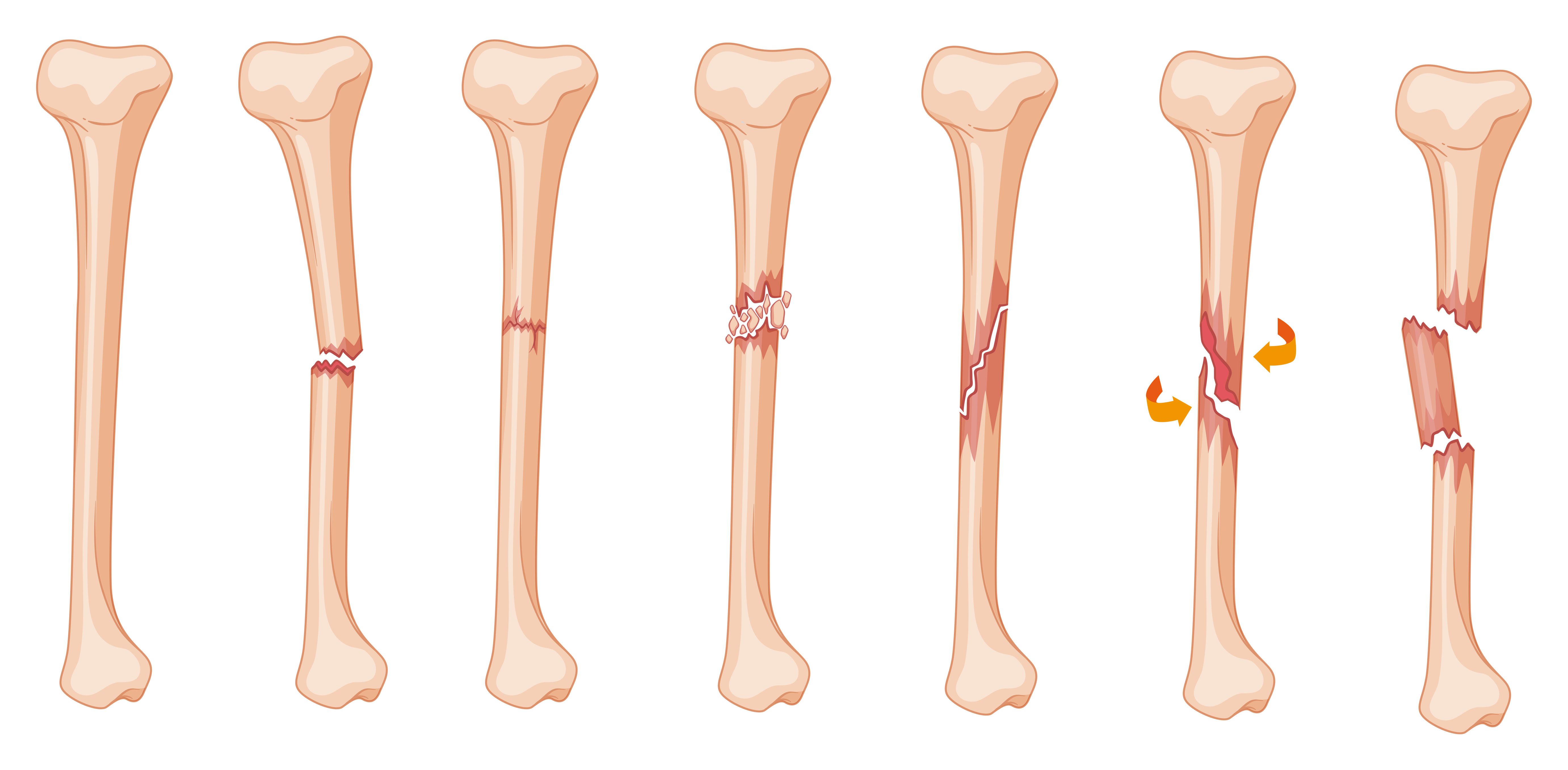- Center on Health Equity & Access
- Clinical
- Health Care Cost
- Health Care Delivery
- Insurance
- Policy
- Technology
- Value-Based Care
Acute Calcium Pyrophosphate Deposition Arthritis May Double Patients’ Risk of Fracture
This data represented the first-ever research presented at ACR on both fractures and calcium pyrophosphate deposition disease.
This article was originally published in HCPLive® and has been lightly edited.
The risk of fractures is almost doubled for individuals with acute calcium pyrophosphate crystal arthritis compared to those without, according to new research presented at the American College of Rheumatology’s (ACR) 2023 Convergence in San Diego, California.1
Leg Fracture Stages | image credit: GraphicsRF - stock.adobe.com

The new data, the first of its kind at ACR on fractures and their association with calcium pyrophosphate deposition (CPPD) disease, sheds light on a condition that had largely not been connected to fracture risk prior to this study. CPPD disease had, however, been shown to be positively associated with osteopenia in 2 prior cross-sectional studies.
CPPD disease involves the growth of calcium pyrophosphate (CPP) crystals around patients’ cartilage cells, leading to potential inflammation of joints, to pain, and to swelling. The condition of CPPD disease has frequently been titled "pseudogout" resulting from its clinical resemblance to gout.
The investigators of the new study on CPPD and fractures note that the disease is less understood than other forms of inflammatory arthritis. Sara Tedeschi, MD, MPH, a rheumatologist known for her work at Brigham and Women’s Hospital in Boston, Massachusetts, led a team from the Medical College of Wisconsin in this study.
Tedeschi’s team of collaborators sought to contribute to the existing literature on the topic by assessing whether individuals known to have CPPD disease may face an increased risk of fractures. Though prior data shows a link between lower bone density and CPPD, Tedesci and her team noted that recent experimental model data had suggested that greater osteoclast formation due to a loss of osteoprotegerin function could lead to the disease's pathogenesis.
Tedeschi’s team conducted a study using a matched cohort design with electronic health record (EHR) data drawn from the Mass General Brigham healthcare system. Their research covered the data of over 1,100 individuals in the EHR database with at least a single episode of acute CPP crystal arthritis in the timeframe between 1991 - 2017, matching with more than 3,300 comparators that did not report such a condition.
The investigator’s primary outcome they looked at in their research was the initial fragility fracture at certain anatomical sites. Their secondary outcomes included the initial fracture at each of these same sites.
The research team mandated a baseline duration of ≥ 180 days from EHR entry to the index date, and they made sure to exclude those with a baseline fragility fracture. Additionally, covariates encompassed smoking, hyperparathyroidism, sex, age, racial identity, rheumatoid arthritis, healthcare encounters, multimorbidity index, body mass index, oral glucocorticoids, treatment for osteoporosis, and proton pump inhibitors.
Censoring was implemented by the investigators at the earliest occurrence of fracture outcome, death, or the last encounter before April 2023.
The team of researchers ended up finding that the rate of fractures among the subjects they assessed was shown to be about twice as high in the acute crystal CPP arthritis cohort compared to the individuals in the comparator group, after adjusting for traditional fracture risk factors.
The investigators noted that the greater risk of fracture was not viewed as unexpected, though the team’s findings underscore the magnitude of the difference. This was noted given that subjects with cases of acute CPP crystal arthritis had a doubled risk of fragility fractures.
“[The] differences in the risk of fracture were seen, with similar magnitude, after excluding patients that had used corticosteroids in the 90 days before the index date,” Tedeschi said in a statement. “[Moreover], fracture rates diverged within the first months of follow-up, suggesting a pre-existing difference in bone health between cohorts.”2
Additionally, Tedeschi explained that their data did not show whether or not those with acute CPP crystal arthritis had implemented corticosteroids following the index date or whether they had repeated episodes. Tedeschi pointed out that both could affect the findings, as could fall rates which could lead to greater risk of fracture and could have been a distinction between the comparator group and the CPPD group.
“The analysis did not assess vertebral fractures, as these can be asymptomatic and not captured by diagnosis codes,” Tedeschi noted in the statement. “...At a minimum, we hope that clinicians consider assessing bone mineral density in patients with CPPD to determine if osteoporosis treatment is needed.”
The research described here was supported through grants provided by the NIH's National Institute of Arthritis and Musculoskeletal and Skin Diseases.
References
- Tedeschi S, Hayashi K, Rosenthal A, Marrugo J, Fukui S, Gravallese E, Solomon D. Fractures in Patients with Acute CPP Crystal Arthritis versus Matched Comparators in a Large Cohort Study [abstract]. Arthritis Rheumatol. 2023; 75 (suppl 9). https://acrabstracts.org/abstract/fractures-in-patients-with-acute-cpp-crystal-arthritis-versus-matched-comparators-in-a-large-cohort-study/. Accessed November 13, 2023.
- Study Finds Acute Calcium Pyrophosphate Deposition Arthritis Doubles Fracture Risk. American College of Rheumatology. November 7, 2023. Date accessed: November 13, 2023. https://rheumatology.org/press-releases/study-finds-acute-calcium-pyrophosphate-deposition-arthritis-doubles-fracture-risk.
